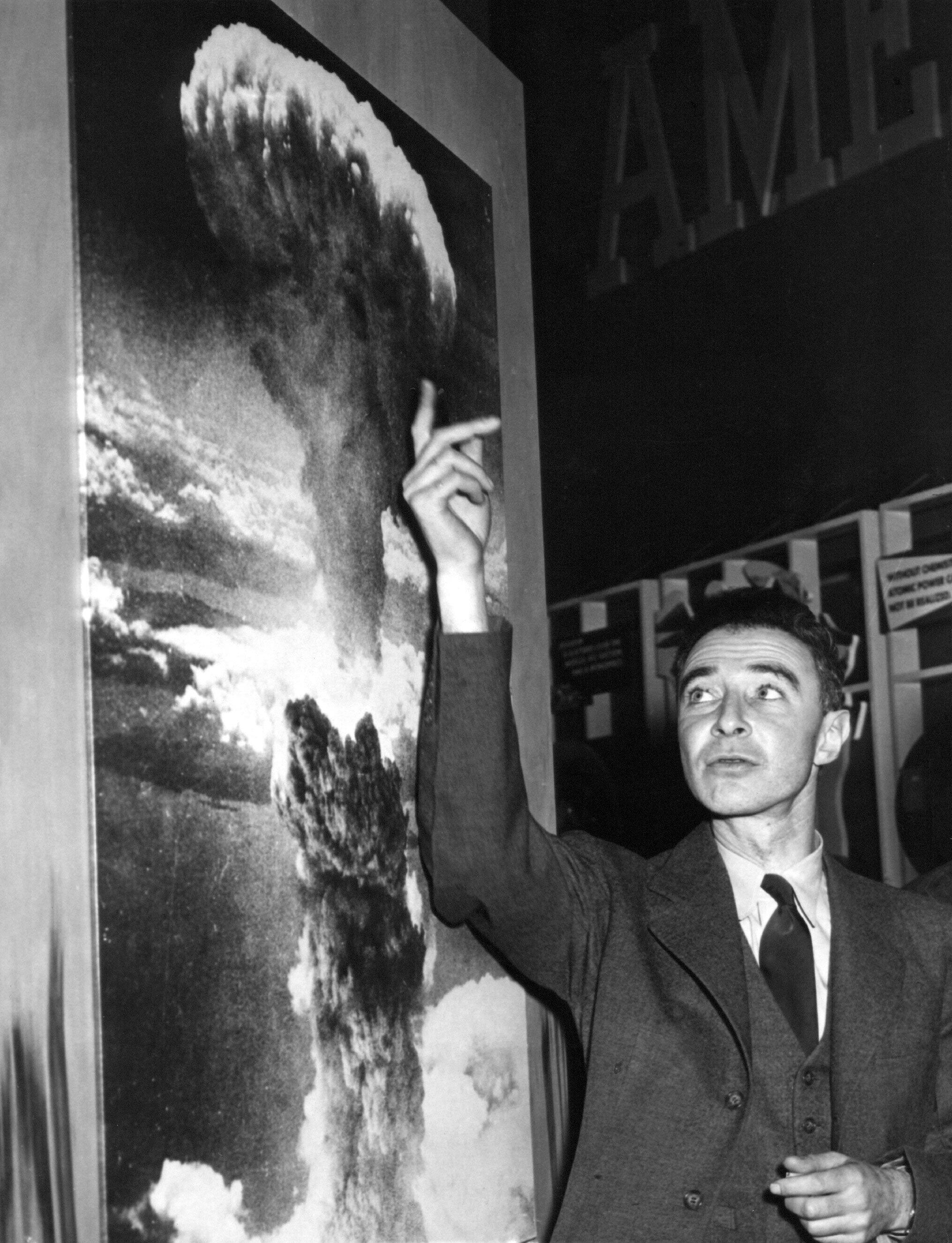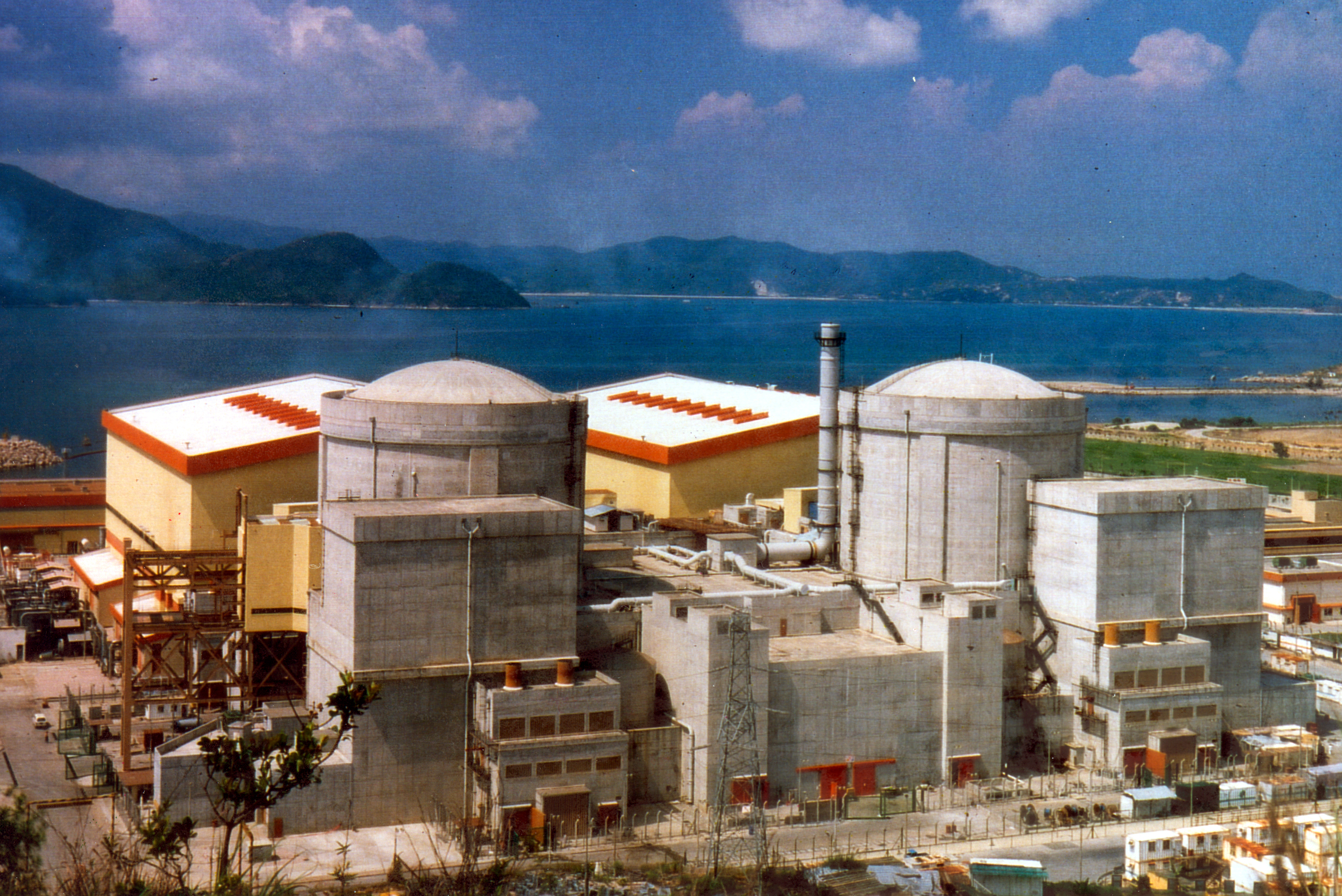On July 20th of this summer, the movie “Oppenheimer” was released in cinemas worldwide. Directed by Christopher Nolan, this film narrates the life and achievements of J. Robert Oppenheimer, the father of the atomic bomb, and it reminds the audience that humanity still lives with the aftermath of his creation: the promises of low-carbon nuclear energy to mitigate global warming and the threat of total annihilation from a nuclear war. These formidable issues can only be addressed with approaches that combine bold policy ideas supported by strong technological insights. With its unique geographical position and relevance as a global center for ideas, Hong Kong and HKUST can be at the forefront of discussions on how humanity will deal with the legacy of the atom.

J. Robert Oppenheimer with a snapshot of a nuclear explosion cloud
Many people in Hong Kong might wonder what makes nuclear science and policy relevant in this city. The connection becomes clearer when one remembers that ¼ of the electricity consumed in Hong Kong comes from a nuclear reactor located on the mainland. Besides, with pressing objectives to decarbonize its electricity sector, Hong Kong is considering increasing the share of imported nuclear electricity to more than 50%, making Hong Kong one of the most nuclear-dependent cities in the world. A look at the locations of nuclear power plants in the region also shows that Hong Kong and the Greater Bay Area are surrounded by many nuclear power plants, making the megalopolis all the more vulnerable to a nuclear accident. Finally, China is on course to become the world leader in nuclear technology, a shift that will bring fundamental changes to the nuclear industry and its practices worldwide. Whether it is to better prepare for a nuclear future domestically or to understand the changes to come for the global nuclear sector under Chinese leadership, Hong Kong and HKUST have a unique role to play in participating in the peaceful use of nuclear energy.

The Daya Bay Nuclear Power Plant in the Guangdong Province provides 25% of the electricity consumed in Hong Kong
As the movie “Oppenheimer” shows, nuclear technology confronts us with existential threats. The Doomsday clock, which indicates how close humanity is to a nuclear apocalypse, is now set 100 seconds to midnight, the closest it has ever been to the fatal hour. Most concerning for experts is the rising confrontation between China and the U.S. and the nuclear arms race they have engaged in. Many fear that a nuclear war between the two powers could be triggered by an accident during a clash in the South China Sea or near Taiwan. Nuclear arms control treaties and exchanges between nuclear experts from rival states have been crucial in the past to mitigate the risks of nuclear conflicts. However, there has been an alarming collapse of nuclear arms control frameworks and a shutdown of communication between nuclear experts from China and the U.S. in recent years. Hong Kong is geographically located at the doorstep of possible military conflicts between the U.S. and China and cannot escape the deadly impacts of such clashes. Yet, the city has a compelling asset that it can leverage to contribute to preventing these nightmarish outcomes. As the city where “East meets West”, Hong Kong can help restore the vital connections between nuclear experts and act as a platform where they can discuss policy frameworks to reduce the risks of a nuclear conflict between the two countries. The city of Hong Kong has a responsibility to its people and the world to work toward avoiding a nuclear war between the two rivals.
About the Author
Prof. Julien de Troullioud de Lanversin
Prof. Julien de Troullioud de Lanversin is Assistant Professor in the Division of Public Policy at the Hong Kong University of Science and Technology. He received his Ph.D. in Applied Physics from Princeton University. Prof. de Troullioud de Lanversin’s scholarship combines technical solutions and policy analysis to address the dangers of nuclear technologies while promoting its peaceful use as low-carbon energy. He is interested in nuclear energy’s role in decarbonizing the electricity sector in Hong Kong and China while addressing public concerns over safety issues. Prof. de Troullioud de Lanversin also works toward understanding and addressing the risks of nuclear war, especially in the context of the U.S.-China rivalry. Together with the academic community at HKUST, he is striving to place Hong Kong at the front stage of discussions on how the atom will impact humanity’s future.
